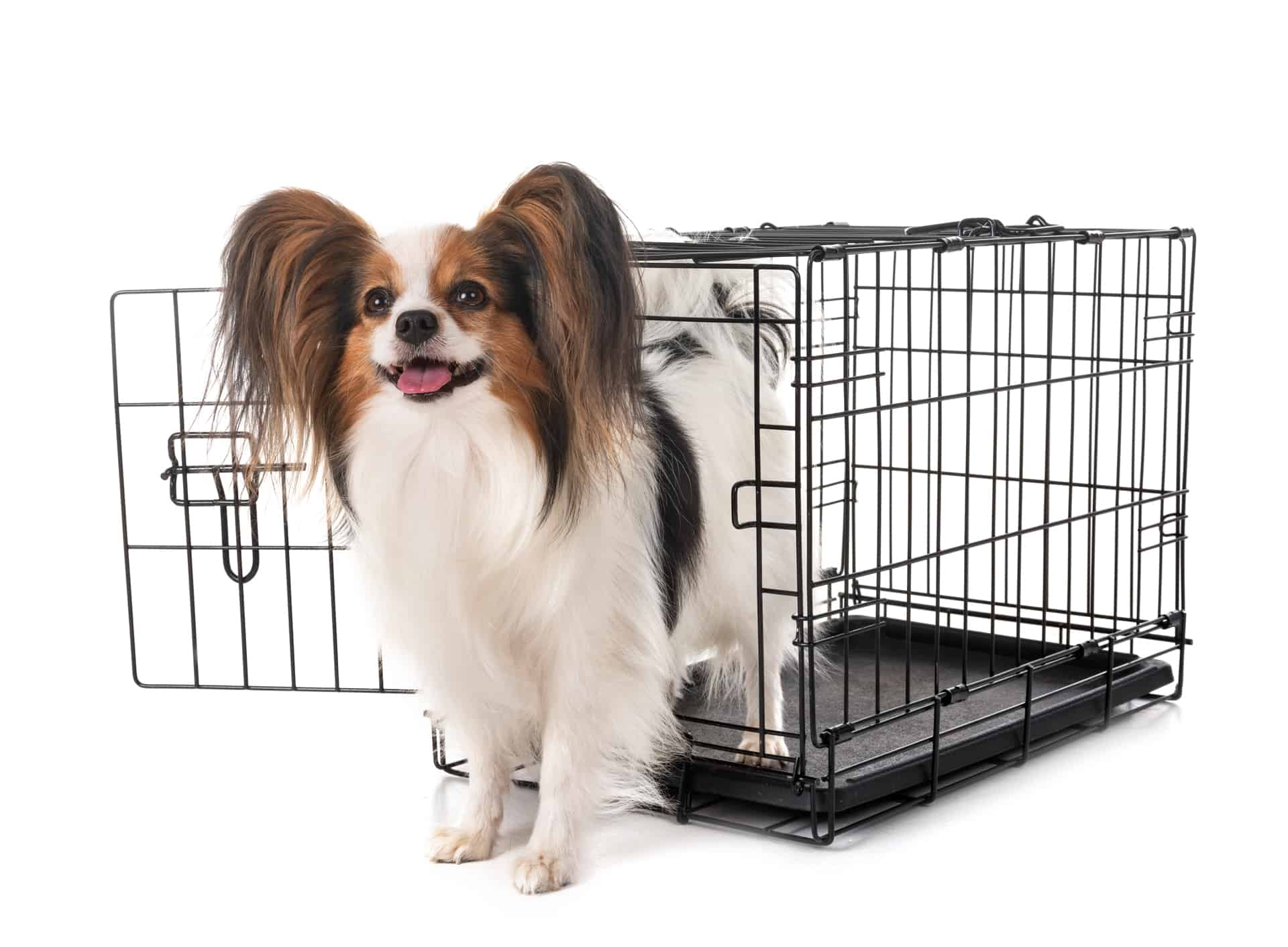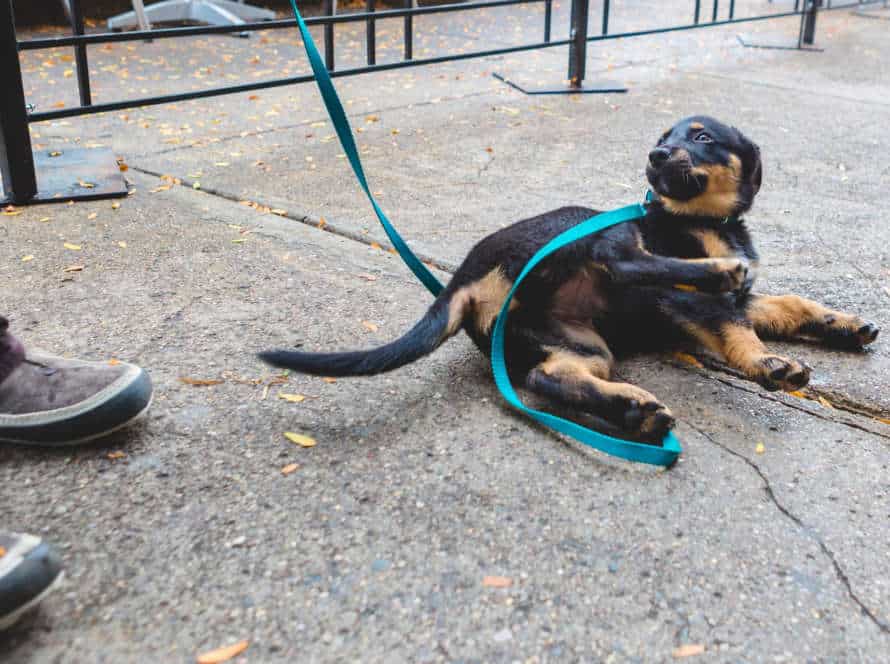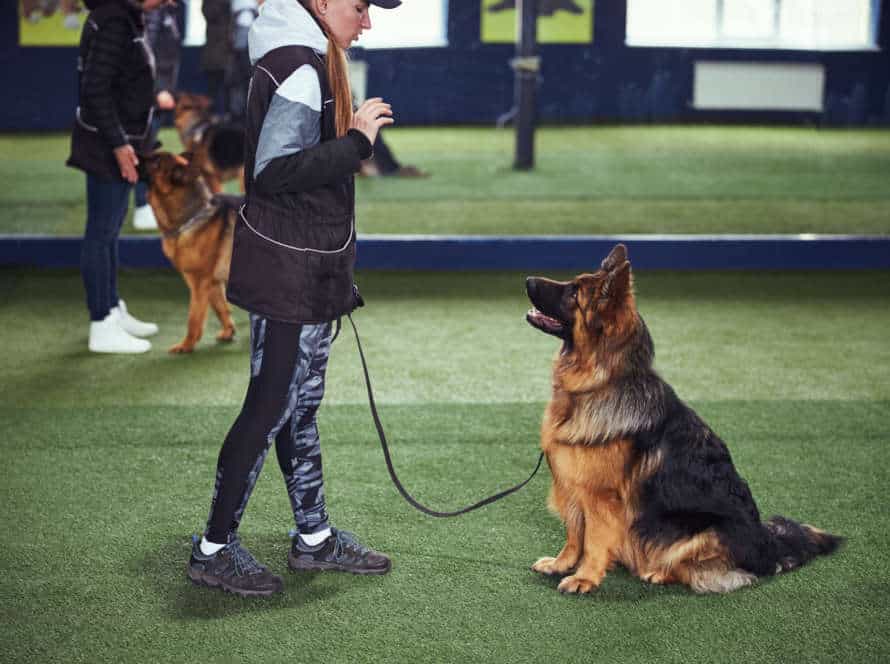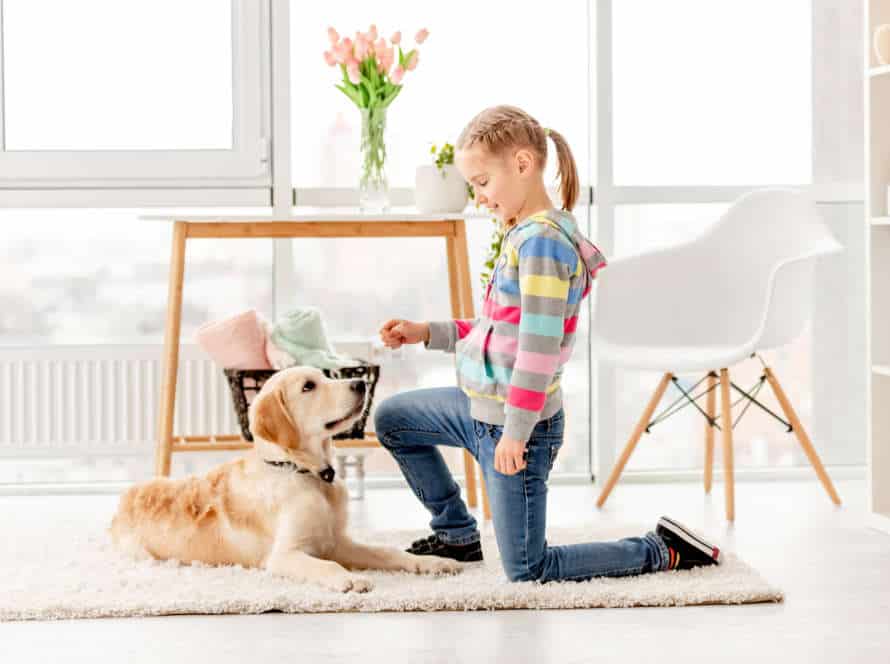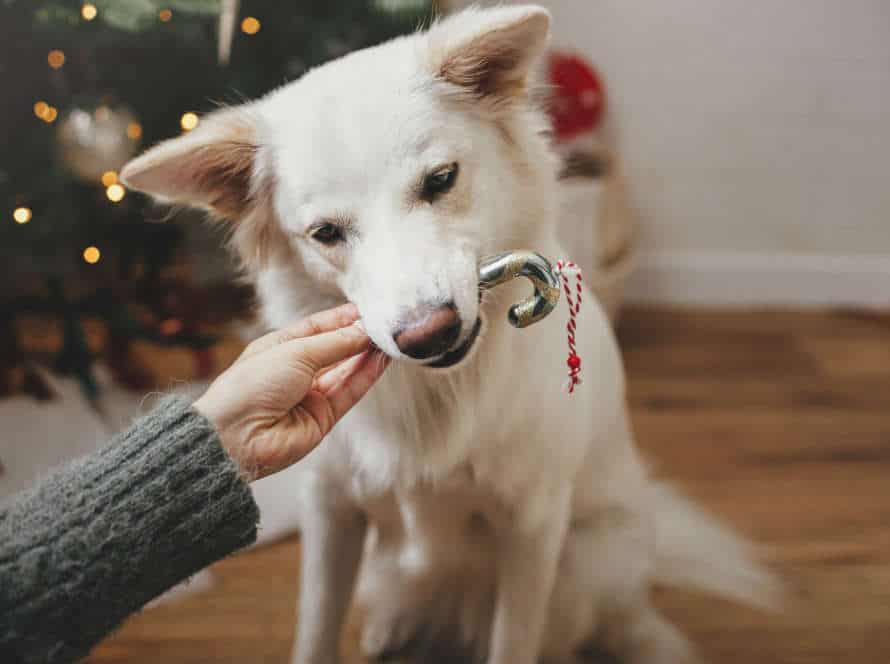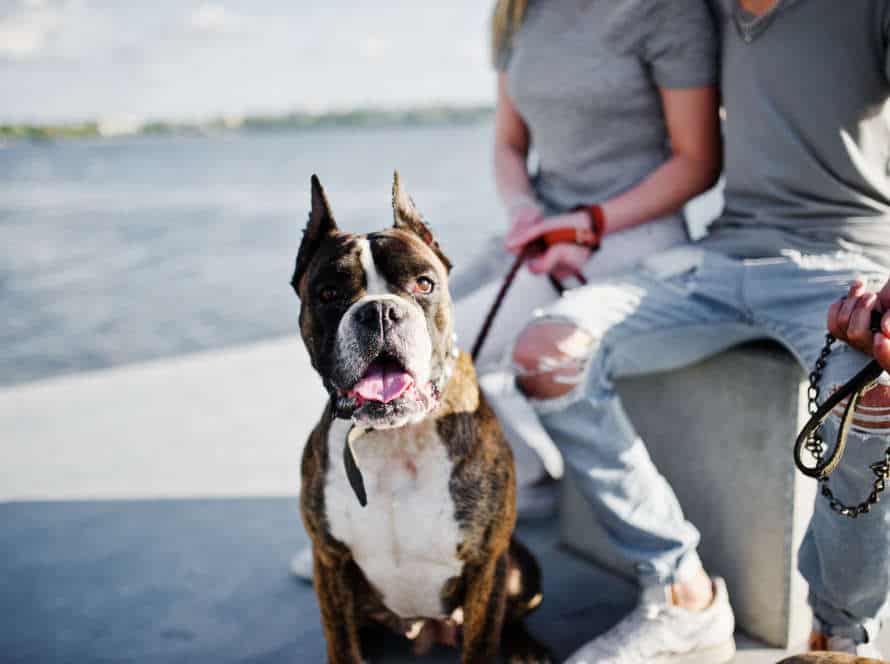Teaching Your Dog to Love Their Crate While You’re Away
For your pup to love their crate when you’re gone, create a pleasant atmosphere and make a positive link. Here are some tips:
- Begin with a few minutes and increase time gradually.
- Make the crate cozy by adding a fuzzy blanket or bed, plus familiar items like toys or snacks.
- Give rewards such as treats or praise each time they enter or lay down.
- Never use the crate as punishment, or it won’t be effective.
- Always keep the door open when you’re home, so they can explore and get familiar.
- Use the crate often, even when you’re home, to reinforce the positive connection.
Pro tip: Every dog is different. Be patient, remain consistent, and if needed, seek help from a professional to ensure your pup is happy and comfortable when you’re gone.
Understanding the Importance of Crate Training
Crate-training your pup has many long-term advantages. When you’re absent, it keeps them secure. It can help with toilet training and give them their own area. Crate-training is also crucial for behavioural training. It forms a routine and teaches them the boundaries.
Let’s look deeper into why crate-training is important for pups.
Benefits of Crate Training Your Dog
Crate training is a must for any dog-owner. It has lots of advantages. It makes your pup feel safe and secure, and helps prevent them from engaging in bad habits like chewing and destruction when you’re not around. Here are the benefits:
- It’s easier to housebreak your pup if they’ve been trained to identify the crate as a comfy sleeping/resting spot.
- The crate is a great sanctuary for them to relax away from any stress.
- It also keeps them and your house safe. Crate training stops them from chewing electric cords, eating dangerous items and medicines.
Remember, only use positive methods to train them. Reward them when they do good!
Common Myths About Crate Training
Crate training is a go-to approach for lots of pet owners to educate their pups. Regrettably, there are myths out there concerning it. Understanding the value of crate training and debunking these myths is crucial for pet owners who want the best for their doggos.
Myth #1: Crate training is cruel.
No! Crate training is actually a secure and useful way to give your pup a safe and comfy den. When done correctly, it can be a relaxing spot for your pooch, helping reduce their stress and making them feel secure.
Myth #2: Dogs should only be crated at night.
Incorrect! A crate can be a great tool to limit your pup’s access to your home when you’re away or unable to supervise them. A well-sized crate with warm bedding and toys can aid in easing separation anxiety and keep them safe from potential hazards.
Myth #3: Dogs should be punished by being crated.
No way! A crate should never be used as a form of punishment. Your pup should view it as a positive spot with treats and toys, so they want to be in it.
Pro tip: Introduce your pup to the crate gradually. Make it a pleasant and calming spot for them. Keep the crate door open initially and put items inside, like bedding or a t-shirt with your scent.
When to Begin Crate Training
Crate training can be a great tool for teaching your pup good behavior and independence. It’s essential to start it at the right time, to avoid bad memories with the crate. Here are some tips to help you decide when to begin:
- Age: Puppies as young as 8-10 weeks can be taught, but don’t rush it. Their bladders are still immature.
- Behavior: If your dog has mischievous behavior or is stressed when you’re away, crate training can help. It keeps them secure while you’re away and encourages good behavior while reducing stress.
- Schedule: If you have a fixed schedule, crate training can help with potty training and independence. Introduce them gradually and give them toys and treats to make it a pleasant experience.
Choosing the Right Crate for Your Dog
Getting the correct crate for your pup is very significant. Ensure you pick a crate that is comfy, roomy and safe. This can help your doggo adjust to their crate swiftly. This article explains the value of finding the right crate and the sorts of crates available.
Sizing Your Dog’s Crate
Choosing the right size crate for your pup is important. It should be big enough for them to move around comfortably, but not too large that they can use part as a bathroom and the other as a bed. Here’s what to do:
- Measure your dog from their nose to the base of their tail. Add 2-4 inches to the measurement for the minimum length of the crate.
- Measure your pup from the ground to the top of their head or ears, whichever is taller. Add 2-4 inches to the measurement for the minimum height of the crate.
- Choose a crate that meets or exceeds these minimum measurements. Consider using partition panels to adjust the size as your pooch grows.
- Make the crate a positive space. Give them a comfy bed or blanket, safe and stimulating toys, and praise and treats during crate training.
Types of Crates to Consider
It’s imperative to pick the right crate for your pup’s safety and comfort. Especially if they’re in it while you’re away for an extended time.
Here are a few types to look at:
- Wire Crate: These give great airflow and visibility plus are simple to clean. They come in collapsible and stationary options.
- Plastic Crate: Also known as airline crates. They are strong and provide more seclusion for your pup. Perfect for travel and used for crate training at home.
- Soft-Sided Crate: Lightweight, portable, and simple to store. Best for small dogs and for short periods of use.
- Wooden Crate: Pleasing to the eye and could double as furniture. Has less ventilation and might not be the best for hot climates.
Pro tip: Choose the right size. They must be able to stand, turn, and lie down comfortably. Don’t use it as a punishment – it should be a happy place for your furry buddy.
Setting Up Your Dog’s Crate
Set up a crate for your pup! It’s a great way to give them a safe and secure area. Here’s how:
- Choose a size that they can move, stand, and lie comfortably in. Too small is not comfy.
- Add soft bedding, like a blanket or a dog bed. This will keep them warm and cosy.
- Put the crate in a quiet place, away from loud noises and distractions.
- Teach them to love their crate. Introduce it slowly, and reward them for going in. Do this for short periods, then increase the time. This will help them link their crate with good experiences and feel comfy when you’re not around.
Introducing Your Dog to Their Crate
Your pup’s crate is a crucial part of their comfort when you’re away. It gives them a sense of security, and helps reduce your stress, too! So, what’s the best way to get them used to it? Here are some tips for introducing your pup to their crate and creating a stress-free environment:
Creating a Positive Association with the Crate
Forming a nice relationship with the crate is important when introducing your pup to this new area. Here are some hints to make it happen:
- Put treats and their preferred toys in the crate, then leave the door open. Cheer them on as they investigate the crate and give them praise when they get close or interact with it.
- After they get used to the crate, feed them inside with the door open. This will help them link positive vibes to the crate.
- Once they’re comfortable eating and playing in the crate, start closing the door for short periods when you’re around. As they get more relaxed, increase the time they stay inside until they’re okay being in the crate for several hours.
- Give them a comfy bed and some toys when they’re in the crate. This will help them link the crate to positive experiences and make them feel safe and comfy.
Eventually, your dog will be happy to spend time in their crate and even like it as their safe and cozy spot.
Using Treats to Encourage Crate Training
Crate training your pooch is essential for creating a safe and secure home. Done right, it can give your pup their own cozy space while you are gone. Treats are an efficient way to encourage crate training. Here are some steps:
- Put a treat inside the crate to introduce your dog.
- Praise and give treats to encourage your pup to enter.
- Close the door for a few seconds, gradually increasing time.
- Reward your pup’s good behavior in the crate with treats and positive reinforcement.
Treats can help establish a positive association between your pup and their crate, making the training process enjoyable. Pro tip: Put water and toys in the crate to make it comfy for your pup.
Avoiding Common Crate Training Mistakes
Crate training is an excellent way to make sure your four-legged pal is secure when you’re not around. But, lots of pet owners make mistakes that can ruin it.
Here are some common crate training errors to steer clear from:
- Using the crate as discipline: Never use the crate as punishment. Your dog should think of the crate as a place of safety and positivity.
- Leaving your pup in the crate too long: Being in the crate for too long could cause physical issues, behavioral troubles, and anxiety. Provide your pooch with exercise, food, and water before sticking them in the crate.
- Getting the wrong size crate: Your pup needs enough room to stand, spin around, and lie down comfortably. If the crate is too small or too big, it will stop the crate training from working.
- Giving in to whining: If you let your pup out when they cry or whine, they will understand that’s how they get your attention. Stay put until your pup has calmed down and stopped whining before you let them out of the crate.
Bonus tip: Always reward good behavior with positive reinforcement such as treats or kind words to remind your pup of their love for their crate.
Making the Crate a Comfortable Space for Your Dog
A comfy crate is vital for teaching your pup to love it. If they don’t have a good vibe with it, it can be hard for them to chill when you’re away. Here are some ways to make the crate more inviting and pleasant for your little companion:
Adding Comfortable Bedding to the Crate
Giving your pup a comfy bed in their crate can help them feel content when you’re away. Here are tips to make it just right:
- Pick a supportive material, like a crate pad, orthopedic dog bed, or blankets.
- Make sure it’s machine washable and easy to clean.
- Check the climate and temperature of your house.
- Ensure the bedding is the correct size for the crate.
Teach your pup to love their crate too! Do this by providing meals, toys, and treats. With some time and patience, they’ll see it as a cosy and secure spot to chill.
Ensuring Proper Ventilation in the Crate
Ventilating a crate correctly is essential for a pup’s comfort. Airflow helps keep them cool, peaceful, and relaxed. Here are some tips for proper ventilation:
- Pick a crate with ample holes or slats for air.
- Put the crate in a ventilated area, but not in direct sunlight or by any heat sources.
- Have a fan close to the crate to increase air circulation.
- Don’t cover the crate with a blanket or towel, especially when it’s hot.
- Regularly inspect the crate to ensure nothing is obstructing the ventilation.
- In hot weather, give your dog plenty of water and maybe even a cool towel or ice pack for extra temperature regulation.
Including Toys and Chew Treats in the Crate
Introducing toys and chew treats to your pup’s crate is a great way to make it a comfy and enjoyable spot while you’re away! Here’s how to do it:
- Choose strong toys and snacks that will take your dog a long time to enjoy.
- Put a few toys and treats in the crate, not too much so it doesn’t get too packed.
- Choose toys and treats your dog loves but only have in the crate to make it more alluring.
- Switch the toys and treats regularly to keep your pup stimulated and avoid boredom.
- Remember to monitor your pup while in the crate, and get rid of any broken or dangerous toys.
Gradually Increasing Your Dog’s Crate Time
Getting your pup to be at ease in their crate when you’re away may require some patience. It’s crucial to move slowly and steadily extend the time they spend in the crate. Doing so will establish a trusting relationship between you and your dog, and make them feel safe and secure.
Here are some tips on how to do it!
Starting With Short Intervals
Key tip: Start with short intervals when training your pup to love their crate. This is very important to prevent panic and anxiety. Here’s how:
- Introduce the crate calmly, with positivity.
- Start with just a few minutes while you are in the same room.
- Increase this time daily, for a few more minutes each day.
- Continue this every day until your dog feels comfortable.
- Make the crate inviting with toys, a soft bed and water.
- Reward good behavior with treats and praise.
- Never punish with the crate; it can cause fear.
Gradually Extending the Time Your Dog is in the Crate
Crate training is a must to help your pup feel safe while you’re away. Gradually increasing the crate time is key for their well-being. Here are the steps:
- Start short: Put your pup in the crate for short moments while you’re home, building up the time.
- Positive experiences: Give treats and toys and reward them when they leave calmly.
- Introduce alone time: After they’re comfy with the crate, start leaving them alone for short amounts of time. Increase it over days/weeks until they can stay in for a few hours.
- Patience: Dog training takes time and patience. Don’t rush it.
Pro tip: Make it feel like home with bedding, toys and a water bowl.
Creating a Crate Schedule for Your Dog
Creating a crate schedule is a must for training your pup to like their crate. Doing it gradually with rewards will help them feel safe & secure. Here’s how:
- Start with brief periods, 5-10 minutes, and build up as they get more comfortable.
- Give treats or verbal praise when they go into or stay in the crate.
- Follow the same schedule to help your dog form a routine.
- Use commands or treats to let them know it’s time for the crate.
- Don’t use the crate for punishments, or leave them in there for too long.
With patience & consistency, crate training will help them feel safe & content when you’re away.
Overcoming Common Crate Training Challenges
Crate training your pup can be tricky. It can feel like you’re taking one step forward, then two back. But don’t give up! With patience and perseverance, you can teach your dog to adore their crate.
We’ll discuss some difficulties that come with crate training and how to overcome them.
Separation Anxiety
Separation anxiety can be a problem when crate training your pup. But, there are steps you can take to help them learn to love their crate while you’re away.
A great technique is to increase the time your pooch spends in the crate gradually. Start with 5-10 minutes and increase it over several weeks.
Other tips:
- Use treats, praise and toys to make the crate a positive experience.
- Exercise and mentally stimulate your pup before placing them in the crate.
- Pheromone sprays and calming products can help reduce stress.
- Avoid punishment and negative reinforcement.
Follow these tips, be patient and consistent and your pup will eventually overcome their separation anxiety and love their crate.
Whining and Barking in the Crate
Crate training a dog can be difficult due to the whining and barking. But, don’t worry! Patience and consistent training can help. Here are some tips:
- Introduce the crate gradually. Offer treats and toys inside.
- Start with short times in the crate. Increase duration over time.
- Never punish or scold them for whining/barking.
- Ignore ’em when they whine or bark. Give attention/praise when quiet/calm.
- Make sure your dog has exercise and mental stimulation before crating. A tired pup will relax in the crate.
Accidents in the Crate
Accidents in the crate can challenge your dog’s crate-training. Patience and the right techniques can help you get through these issues. Your pup can learn to love the crate even when you’re away!
If accidents occur, be sure to clean the crate properly to remove any odors. To prevent future accidents, take the following steps:
- Give your dog time to go to the bathroom before crating.
- Give your pup enough room to turn around, stand, and lay down comfortably.
- Increase the time spent in the crate gradually.
- Don’t give food or water right before crating, and remove any extra water from the crate.
By staying consistent and following these tips, your pup will feel calm and secure in their crate even when you’re not there.
Monitoring Your Dog’s Progress and Achieving Success
Training your pup to cherish their crate while you’re away may seem daunting, but it can be rewarding! Keeping track of your pooch’s progress is essential. This way, you and your dog can reach your goal together. Here are some steps to ensure success:
- Make the crate appealing to your pup by placing their bed or blanket inside along with a few toys.
- Introduce the crate gradually by allowing your dog to explore the crate on their own terms, offering treats and praise as they do so.
- Associate positive experiences with the crate by feeding your pup their meals inside and placing special treats in it for them to discover.
- Get them comfortable with a closed door by first closing it for just a few seconds before gradually increasing the amount of time they spend inside with the door closed.
- Practice leaving and returning several times a day, gradually increasing the amount of time you are away until your pup is comfortable for longer periods.
- Always reward good behavior with treats and praise to reinforce positive associations with the crate and being alone.
Keeping a Log of Progress
Making a log of your pup’s development is a key piece of observing their advancement and succeeding in showing them to adore their crate while you’re away. Here are some tips:
- Set objectives you can measure for your pup’s crate training.
- Use a notepad or digital document to record your pup’s progress each day.
- Note details like how long your pup stays in the crate, if they yelp or bark, if they pee inside the crate, and any other applicable conduct.
- Examine the information to spot designs or issues and modify your preparation as necessary to address them.
- Consistently survey your progress log to commend successes, set new objectives, and guarantee you are staying on track to accomplish your crate training objectives.
Celebrating Milestones and Achievements
Celebrating your pup’s accomplishments in their training is just as important as the training itself. If you’re achieving success with crate training – that’s a major milestone and you should celebrate it!
Here’s how to monitor progress and achieve success with crate training:
- Introduce your pup to the crate in short sessions, give treats and praise to make it enjoyable.
- Gradually increase the time your pup spends in the crate, reward them with treats and praise for good behavior.
- Monitor progress and adjust training as needed. Notice their body language and vocalizations to make sure they’re happy and comfortable.
- Celebrate milestones and achievements with treats, toys, and lots of praise and love. Make training a positive experience for your pup.
Pro-tip: Teaching your pup to love their crate takes time and patience, but the end result is worth it. With the proper training and positive reinforcement, your dog will see their crate as a safe and cozy space to relax while you’re away.
Enjoying the Benefits of a Crate-Trained Dog.
Crate training your pup has lots of advantages. It sets boundaries and reduces stress, destructive behavior, and accidents. Here’s how to keep an eye on their progress and teach them to love their crate:
- Monitor progress: Start crate training in short bursts. Gradually increase the time. Look for signs of stress. If they seem worried, take a step back and decrease the time.
- Achieve success: Make the crate cozy with a blanket, toys, and treats. Remain calm and cheerful when they’re inside. Praise and reward good behavior. Eventually, they will connect the crate with safety and comfort. Pro tip: consistency and rewards are key to success!
Frequently Asked Questions
1. How can I teach my dog to love their crate when I’m not home?
The key to teaching your dog to love their crate is to make it a positive experience for them. Start by introducing them to the crate gradually, and always reward them with treats or praise when they go in voluntarily. Make sure the crate is comfortable and the right size for your dog, and never use it as punishment.
2. How long can I leave my dog in their crate?
The amount of time your dog can comfortably stay in their crate depends on their age, size, and breed. A general rule of thumb is that puppies under six months old should never be left for more than three to four hours at a time, while adult dogs can typically stay in their crate for up to eight hours.
3. Do I need to put food and water in my dog’s crate?
No, you should never leave food or water in your dog’s crate, as it could lead to spills or accidents. Instead, make sure they have access to clean water and a meal before you leave for the day.
4. Should I leave toys in my dog’s crate?
Yes, leaving toys or other forms of enrichment in your dog’s crate can help keep them entertained and prevent boredom while you’re away. Just make sure any toys left in the crate are safe and sturdy, and won’t pose a choking hazard.
5. What if my dog becomes anxious or stressed in their crate?
If your dog shows signs of anxiety or stress while in their crate, it may be a sign that they’re not comfortable being in there yet. Try introducing them to the crate more gradually, or consider talking to a professional dog trainer for additional support.
6. Is crate training really necessary?
While not every dog needs to be crate trained, it can be a useful tool for many pet owners. Crate training can help with house training, prevent destructive behavior, and provide a safe space for your dog when you’re not home. However, it’s important to always use the crate in a positive way and never as punishment.

